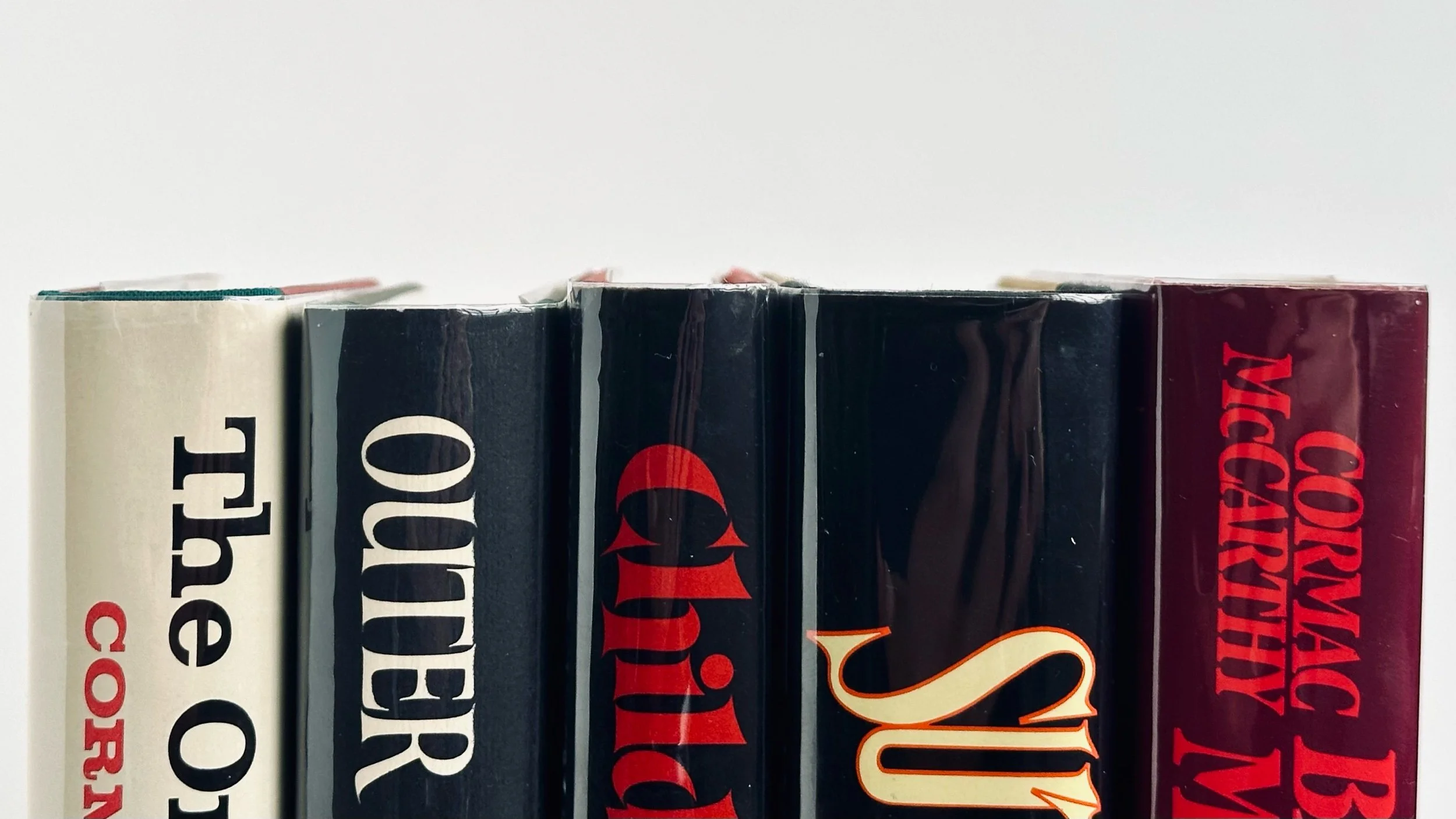Preserving perhaps the most important part of your First Edition, the dust jacket:
In the world of bibliophiles, books are not merely bound paper; they are repositories of cherished memories, profound stories, and timeless art. Preserving these literary treasures is an art in itself, and one key aspect of this preservation is protecting the often-overlooked dust jacket. Enter archival Mylar—a transparent, polyester film that acts as a guardian, ensuring your book's cover remains in pristine condition for generations to come. I recently created videos on Instagram and TikTok for the application process - so follow along there for a visual.
The Process: Preservation
Step 1: Prepare Your Workspace
Begin by setting up a clean, flat surface to work on. Removing any hot dog condiments, donut crumbs or any potential hazards will ensure a smooth application process.
Step 2: Gather Your Tools
For this operation, you'll need:
a Mylar roll or sheet cut to size,
Scissors, or an exacto blade
Step 3: Lay the Dust Jacket Flat
Place the dust jacket flat on top of your mylar, white side up, on your prepared surface. Smooth out any wrinkles or creases, as they can interfere with the Mylar application.
Step 4: Align and Cut
Align the edge of the dust jacket to the edge of the Mylar. I like to ensure I don’t cut or damage the jacket, by giving about a 1/2 inch of excess Mylar to the edges. When all looks straight and aligned (you are free to use a ruler or guide if you’d like) make the cut with your desired blade.
Step 5: Fold and Crease
Fold over the top flap with mild pressure with one hand and with the other hand use your folding tool. Don’t be too firm on the first go, instead crease it lightly and gradually increase the pressure once the mylar is fitting nicely. This careful process guarantees a protective shield without compromising the edges of the dust jacket. The jacket should fit snugly and should have a very small amount of room at the edges.
Step 6: Jacketing the Book
Now with the Mylar applied, align and place the spine of the book to that of the spine of the dust jacket - the spine flat on the surface. Securing the spine, fold in one flap at a time.
Congratulations, you did it.
Why Archival Mylar? The Guardian of Literary Legacies
Shield Against Dust and Moisture: Mylar acts as an impermeable barrier, preventing dust and moisture from reaching the delicate surface of the dust jacket. This is especially crucial for preserving the vibrant colors and intricate designs that make each dust jacket a work of art. The jacket is the most vulnerable part of the book, so protecting it should be a priority. In many cases, the dust jacket becomes more valuable than the book, over time.
Protection from Wear and Tear: The constant handling of books can lead to frayed edges, scuffed surfaces, and faded artwork on dust jackets. Archival Mylar provides a protective layer, shielding the jacket from the inevitable wear and tear that comes with the passage of time. Archival quality Mylar can also help with preventing sun damage, which is a very common plague to dust jackets.
Maintaining Aesthetic Appeal: A book's cover is often a visual representation of the narrative within. By keeping the dust jacket pristine, you ensure that the book remains not only a captivating read but also a beautiful addition to your collection.
Preserving History, One Dust Jacket at a Time
In the grand tapestry of collectible books, each book holds a unique place, and preserving these treasures is a responsibility we carry as custodians of history. If it has a jacket, it should be a priority for protection. Applying archival Mylar to a book's dust jacket is a small yet significant step in this noble endeavor. It's an investment in the continuity of stories, the preservation of art, and a commitment to passing on literary legacies to future generations.
So, the next time you find yourself entranced by the cover of a beloved book, consider taking the time to apply archival Mylar—a simple act that speaks volumes in the language of preservation and love for the written word. After all, every book deserves the chance to tell its story for years to come.











